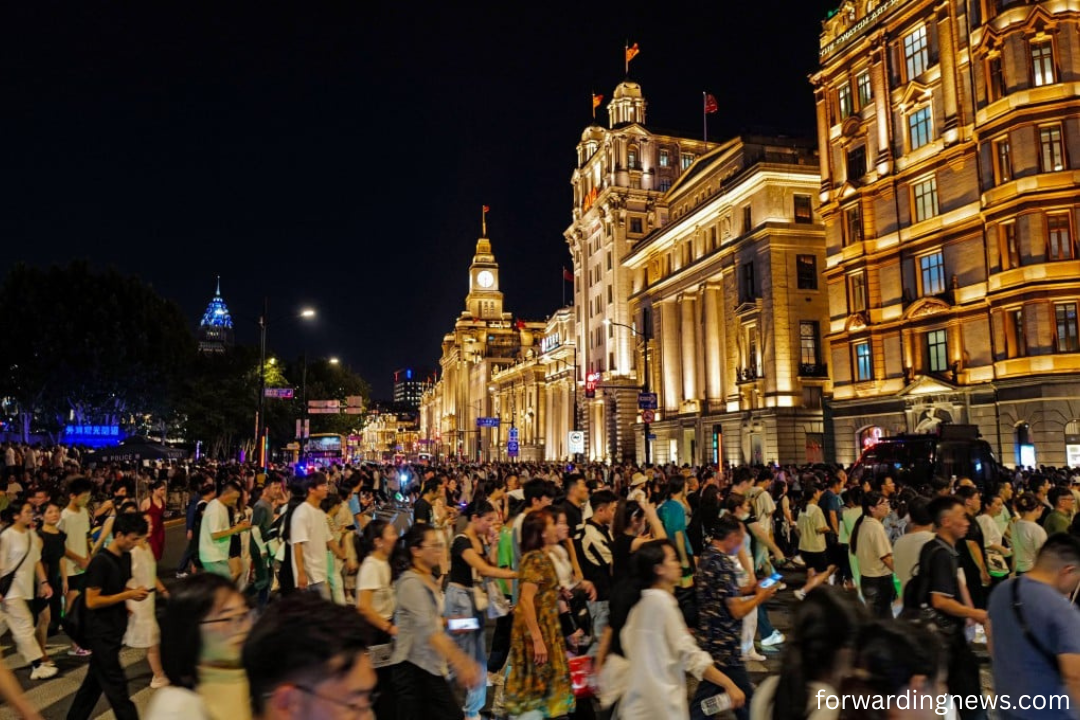Tourism plays a crucial role in China’s economic development, cultural diplomacy, and international image. Prior to the pandemic, the country welcomed over 145 million foreign visitors in 2019, contributing significantly to service exports and job creation. As global tourism rebounds, China sees an opportunity to re-establish itself as a travel hub in Asia and beyond. Officials have stated that strengthening inbound tourism aligns with the broader goals of the 14th Five-Year Plan, especially in fostering international engagement and sustainable economic growth.
Key Tourism Reforms Introduced
China’s inbound tourism strategy revolves around five significant reforms:
Simplified Visa Policies
One of the most significant barriers to international tourism in China has been its visa requirements. The government has announced plans to ease visa regulations for travelers from over 50 countries. These include streamlined application processes, extended stay durations, and increased visa-on-arrival options for key markets such as Southeast Asia, Europe, and North America.
Enhanced Digital Infrastructure
Another pillar of China’s reform is the digitalization of tourism services. A centralized platform will be launched to integrate hotel bookings, attraction tickets, digital payment systems, and multilingual customer service. International travelers will soon be able to use global credit cards and popular mobile payment platforms, improving the overall tourism experience.
Investment in Tourism Infrastructure
Massive investments are being channeled into modernizing airports, railways, hotels, and tourist sites. The construction of bright tourism zones—featuring immersive technologies like augmented reality and interactive guides—will create innovative experiences for global visitors.
Diversified Tourism Offerings
To attract niche traveler segments, China is developing themed tourism routes focusing on history, nature, wellness, and culture. From the Silk Road heritage to eco-tourism in Yunnan and adventure trails in Tibet, the government aims to showcase the country’s vast and diverse landscapes.
Global Tourism Marketing Campaigns
China is increasing its international tourism marketing budget to promote its destinations through global media, influencers, and travel expos. The country will partner with airlines, travel agencies, and online platforms to roll out multilingual campaigns tailored to different regions.
Target Goals for 2025
According to the Ministry of Culture and Tourism, the primary goal is to surpass 80 million inbound visits annually by 2025. The tourism sector is projected to contribute over $200 billion to the national GDP, with an emphasis on high-value, long-stay travelers rather than mass, low-spending tourism.
By 2025, China also aims to:
- Rank in the top five global destinations for inbound tourism
- Increase the average length of stay to 7 days
- Elevate visitor satisfaction to over 90%
- Expand international flight routes to 300 cities
Role of Major Cities in Promoting Tourism
Metropolitan centers like Beijing, Shanghai, Guangzhou, and Chengdu are leading the tourism revival. These cities are upgrading cultural landmarks, enhancing multilingual signage, and launching tourist-friendly apps to assist foreign visitors in real-time.
Each city is also developing its own tourism brand identity. For instance, Beijing promotes imperial heritage, Shanghai markets its cosmopolitan skyline, and Chengdu capitalizes on its panda reserves and culinary experiences.
Leveraging Cultural Tourism and Heritage Sites
Cultural tourism is a cornerstone of China’s inbound strategy. With over 55 UNESCO World Heritage Sites, the country boasts some of the world’s most treasured monuments, temples, and ancient towns. Authorities are placing renewed emphasis on preserving and promoting these sites to create enriching travel experiences.
Innovative storytelling, immersive exhibits, and virtual guides are being developed to make cultural tourism more accessible to international audiences.
Eco-Tourism and Sustainable Travel
Sustainability is increasingly important to global travelers. China is responding by promoting eco-tourism zones, especially in biodiverse regions like Sichuan, Guizhou, and Xinjiang. National parks, protected forests, and nature reserves are being opened to foreign visitors under strict conservation guidelines.
Travelers seeking low-impact, nature-based experiences are a growing market, and China’s investment in sustainable tourism aims to meet this demand while preserving ecological integrity.
Collaboration with Global Tourism Bodies
China is re-engaging with organizations such as the World Tourism Organization (UNWTO) and the Pacific Asia Travel Association (PATA) to align its tourism strategy with international standards. Through such partnerships, the country hopes to exchange best practices, participate in global tourism dialogues, and promote cross-border initiatives.
Tourism Challenges and Risk Management
While the outlook is optimistic, China faces challenges in scaling its inbound tourism sector. Language barriers, geopolitical tensions, health protocols, and outdated perceptions are obstacles that need careful handling.
The government is addressing these risks by:
- Training hospitality staff in multiple languages
- Enhancing public health systems for travelers
- Conducting PR campaigns to reshape global perceptions
How Technology Is Powering the Future of Tourism
Artificial intelligence, virtual reality, and big data are being integrated into China’s tourism ecosystem. Innovative translation tools, facial recognition entry systems at attractions, and AI-driven travel planners are set to revolutionize how tourists explore the country. The smart tourism approach aims to improve convenience, reduce friction, and deliver personalized experiences for every visitor.
Tourism Industry Outlook and Expert Opinions

Experts believe China’s reformed tourism framework is well-timed and strategically sound. According to the China Tourism Academy, the sector is expected to recover to 60% of pre-pandemic levels by the end of 2025, with full recovery projected by 2027. Dr. Wang Xiaolin, a tourism economist, states, “These reforms are not just recovery-focused but future-facing. China is positioning itself not just as a destination but as a global leader in tourism innovation.”
Frequently Asked Questions (FAQ’s)
What are China’s main goals for boosting inbound tourism by 2025?
China aims to significantly increase inbound tourism by 2025, targeting over 80 million international visitors annually. The plan includes improving visa access, upgrading infrastructure, and expanding digital services to make travel more convenient and appealing to global tourists.
How is China simplifying visa policies to encourage tourism?
To enhance tourism inflows, China is introducing more straightforward visa procedures for travelers from over 50 countries. This includes faster processing, extended stay options, and broader eligibility for visa-on-arrival programs.
What types of tourism experiences is China promoting?
China is diversifying its tourism offerings by promoting cultural heritage tours, eco-tourism, wellness retreats, adventure travel, and innovative city experiences. These unique experiences are designed to attract various international traveler segments.
How is technology enhancing the tourism experience in China?
Advanced technologies such as AI, multilingual mobile apps, virtual reality, and innovative payment systems are being used to create seamless and personalized tourism experiences for visitors throughout their journey in China.
What are bright tourism zones, and how do they work?
Bright tourism zones are areas equipped with digital infrastructure that enhance the visitor experience through interactive guides, real-time data, automated ticketing, and location-based services. These zones aim to improve navigation, safety, and engagement.
How is China addressing language and cultural barriers for tourists?
To support inbound tourism, China is investing in multilingual signage, mobile translation apps, and staff training across hospitality and transportation sectors to ensure better communication with international visitors.
Is sustainable tourism a priority in China’s reform strategy?
Yes, sustainable tourism is a key focus. China is promoting eco-friendly travel, protecting natural sites, and encouraging responsible tourism practices, particularly in regions rich in biodiversity and cultural significance.
Which Chinese cities are leading in inbound tourism development?
Cities like Beijing, Shanghai, Chengdu, and Guangzhou are leading efforts to enhance inbound tourism. They are expanding international flight routes, upgrading attractions, and launching international marketing campaigns to attract global travelers.
Conclusion
China’s ambitious reforms mark a transformative phase for inbound tourism. By combining policy liberalization, infrastructure modernization, technological advancement, and global outreach, the country is set to reclaim its position on the world tourism map. The strategic focus on sustainable, culturally rich, and high-quality travel experiences ensures that the future of tourism in China is both resilient and globally competitive. As the 2025 milestone approaches, the world will be watching how China’s tourism landscape evolves and how it welcomes the next wave of international travelers.

